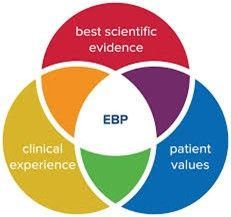Collaborative Documentation: Bridging Engagement and Technology
Collaborative documentation, or client-centered treatment planning, is an excellent tool to improve the effectiveness and efficiency of behavioral healthcare. While more county and state organizations are implementing it, still many organizations have some hesitancy.
What is collaborative documentation? As defined by Bill Schemelter of MTM Services, “Collaborative Documentation is a clinical strategy in which the clinician reviews the session with the client as they document this in the record (e.g. goals and objectives addressed, interventions provided, progress in meeting goals and objectives, clients response to the sessions today, and the plan/recommendations for things the client and if applicable the clinician will do prior to the next session). It replaces the clinical “wrap-up”, using a written medium to reinforce the above important aspects of the session/interaction.”
Why is collaborative documentation so vital? According to a presentation by Katherine Hirsch, LCSW from MTM, the following challenges currently exist:
1. Documentation has become “The ENEMY”
2. Clinicians report that documentation competes with time spent with clients
3. Clinicians count on “no-shows” to complete paperwork and catch up
4. High documentation to direct service ratio reduces number of scheduled appointments in clinic and in community (negatively impacts service
capacity)
5. Clinician’s paperwork is divorced from their clinical work
6. Clinician’s quality of life is affected!
Ask any clinician about their number one frustration with their work and they will most likely tell you that it’s documentation. Any number of clinicians will complain about how tedious and painstaking the process can be, leading to late evenings and weekends spent on the computer instead of with family. At this time of the Great Resignation, where employees are seeking work that improves their mental health, documentation shouldn’t be one of those tasks that worsens it.
Collaborative documentation simply means that, during or at the end of the session, the clinician writes the notes about the session and asks for the client’s input. The client may see the note or the documentation. It can be done at any time during treatment, such as assessment, treatment planning, progress notes, or transition. With so many clients resistant to treatment and feel like they are non-participants in their care, collaborative documentation can be a way to reverse these trends.
In an article in 2013, researchers used the collaborative documentation approach in community mental health centers, or CMHC’s. What they discovered in comparing this approach vs. the traditional approach of documentation was that medication adherence increased and more engagement (as measured by reduced no-shows) occurred. When clients have more of a sense of control in their care, they participate at a higher level.
Technology programs that advance this process, such as clinical decision-making and electronic health record applications, are valuable in making the clinical session more client-friendly.
Praxes provides consulting and behavioral health software to organizations. For more information, please contact us.




